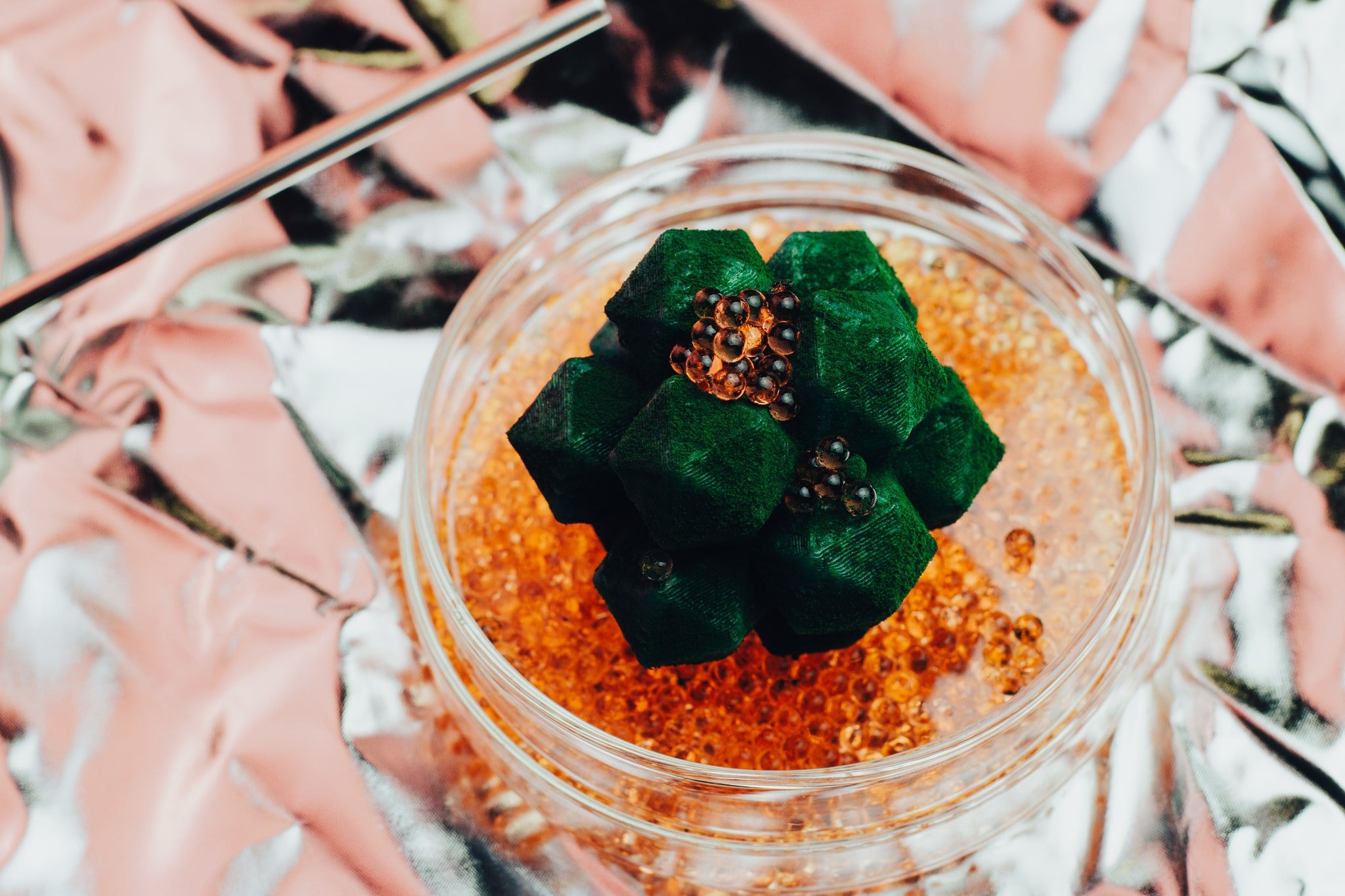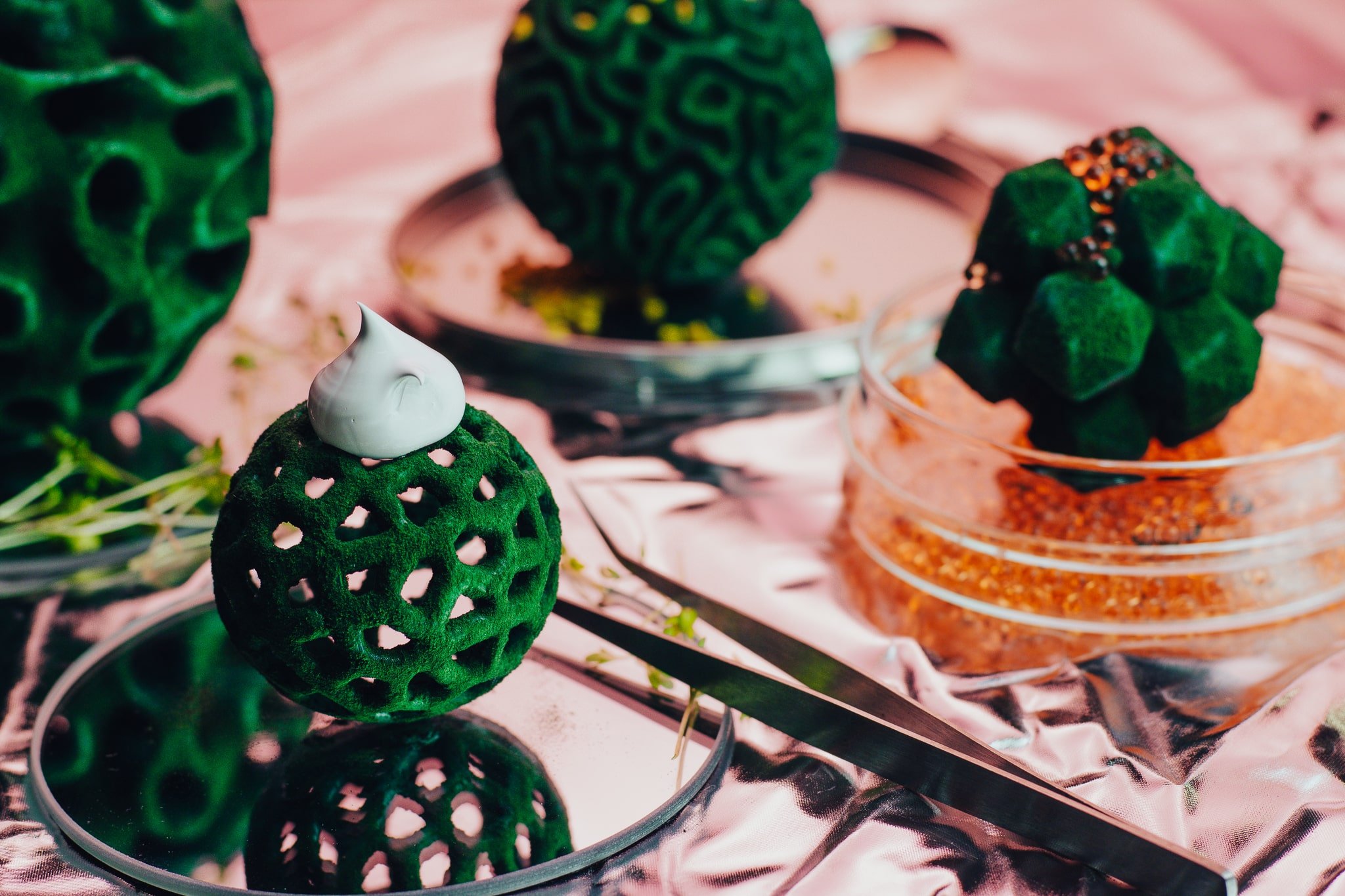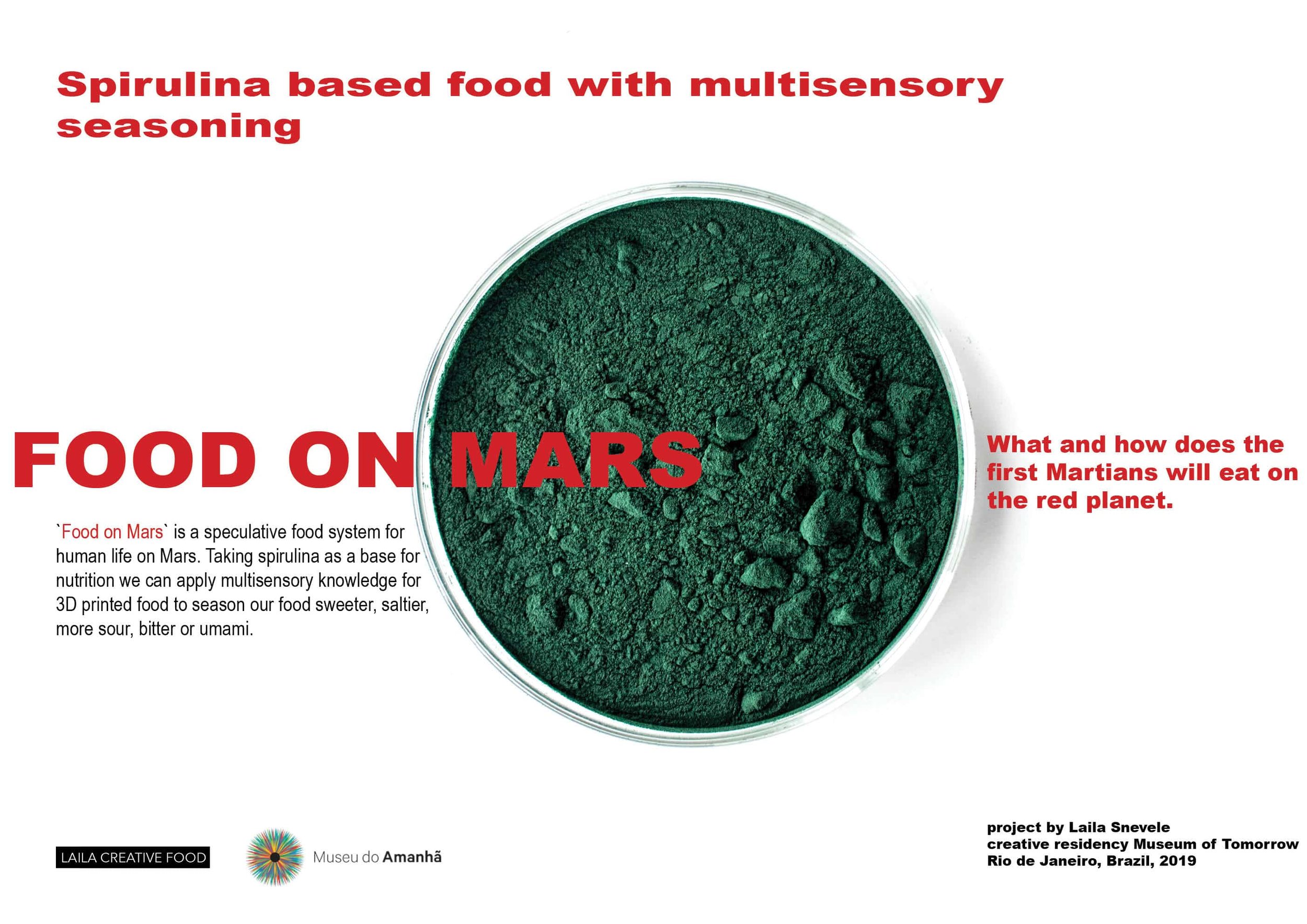FOOD ON MARS
SpaceX predicts that they will send the first permanent human colonizers to Mars by 2024 (in 2019), and alongside the many issues surrounding human life on Mars is the one of food supply. How can we create a system supporting Martians’ independence from Earth? Some options may include: growing crops, cultivating insects, cellular agriculture and lab-grown meat. However, we will face challenges such as low oxygen content, freezing temperatures, exposure to radiation, and a high concentration of metals in the soil. Faced with these challenges, I created Food on Mars during a residency at the <Museum of Tomorrow> in Rio de Janeiro, Brazil.
For this challenge, I looked into foods with very high nutrition content, as it may only be possible to produce in relatively small quantities. I chose spirulina for the fact that it contains protein, carbohydrates, and fat, as well as a wide range of vitamins and minerals. Some advantages compared to other crops are that it does not require pollination and transport from Earth to Mars would be relatively inexpensive. Next, how could I make a biomass of single-celled organisms into food that people might have to eat on a daily basis?
Instead of transporting condiments and flavorings in a spaceship with limited cargo, we can season our food with a multisensory approach. Research shows that elements like color, shape, texture, aroma, temperature, and mouthfeel can influence our taste perception by up to 10 percent. By using multisensory tools, we can create a desired taste sensation in the brain: for example, red colored spirulina served soft in a rounded shape would be perceived as sweeter than the same spirulina with opposite features.
As inhabitants of a new planet, we will want to bring only the best knowledge and technology with us, and not make the same mistakes that we did on Earth. Creating solutions for life on Mars can show us better ways to support life on our home planet.











